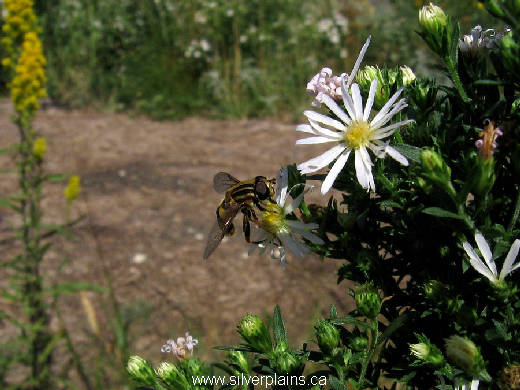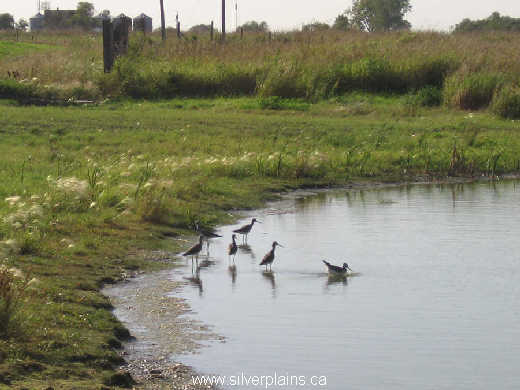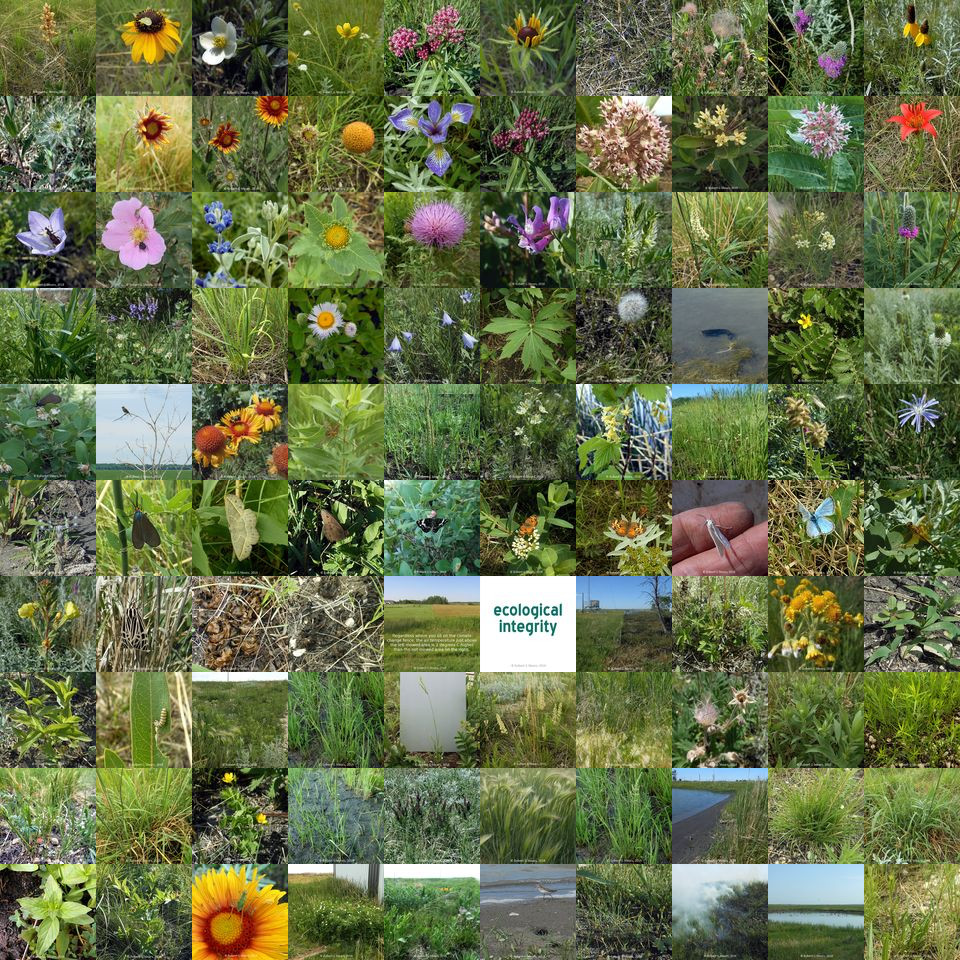
hover fly, white panicle aster
During the process of replanting a property to Native, keeping exotic flora at bay is the biggest challenge. There are, however, other sources of trouble.
One of the reasons for replanting is Native flora provides habitat and food for Native fauna. Trouble is the animate creatures are eager for Native plants. For example, we transplanted some water horsetail (that we found growing in a ditch) at the edges of our pond. Within an hour of digging the new holes and placing the transplants in them, a muskrat ate them. All of them, even the roots. Jackrabbits, meanwhile, have eaten to the ground a number of shrubs that were too small when we planted them out. They're hungry in the spring and they seem to love woody plants at that time of year.
Elsewhere, at the end of one season, we planted out some left over seedlings. They were in 5 cm pots filled with grow mix. At the time we were digging holes slightly larger than they needed to be and, after adding peat moss mixed with loose soil, inserting the plants. This made for starter holes for thirteen lined ground squirrels. They dig burrows. By availing themselves of the soft spots to start new burrows they inadvertantly dug up about fifteen young plants that we had nurtured all summer.
A couple of years ago we tried frost seeding. That's where you sow the seed on top of snow. It is the preferred method of Marcie and Mike O'Connor. We read about it on their website. Trouble was, the following spring was very wet, water from snow melt was very high and two areas that we seeded were deep in water in the spring. Not a single plant germinated where the seed was sown, although sloughgrass seed, which we sowed beside the pond, apparently drifted over to the east ditch which drains the pond to the highway ditch out front. The ditch was thick with the grass later that year. While another area, inside of the dike, stayed fairly dry, it was a favourite spot for a flock of dark-eyed juncos as they migrated through to their nesting grounds. No Native plants germinated there either.
Neighbouring yards have primarily exotic flowers that stay in bloom for a long time. We now have a lot of flowers, too, but Native flora doesn't stay in bloom for long at our site: Native insects, hungry for Native plants, swarm the plants each summer. And, there is no other selection like what we offer in the vicinity.

greater yellowlegs
We've come to think of our place as the Silver Plains Hostel & Smorgasbord. We even offer on site bathing.
Robert G Mears
March 2012

Comments (2)